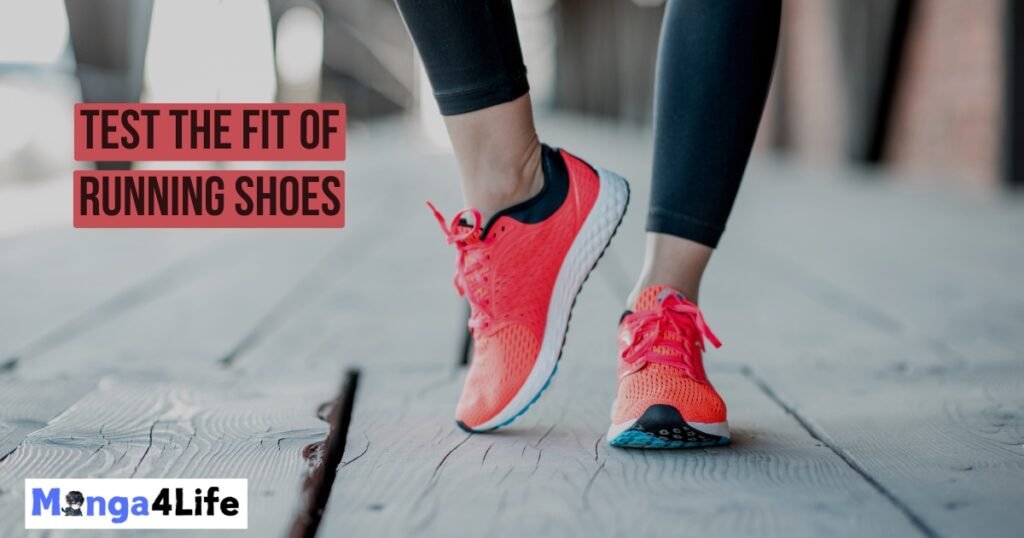Is it better to transport big or smaller for taking walks shoes?

Choosing the correct length for walking shoes is vital for any runner. A properly-turning into shoes guarantees consolation and allows you to save your injuries. When it involves selecting the right length, there’s frequently confusion about whether or not or not or no longer it’s far better to move larger or smaller.
Some humans take delivery as accurate with a more significant length, offering extra comfort. In contrast, others pick out a snug form for a higher manual. In this text, we can discover the communication between going big or smaller and deliver a motive for why a proper shoe in shape is essential for consolation, commonplace average performance, and reducing the hazard of damage.
In this post we will learn in detail about Is it better to transport big or smaller for taking walks shoes.
The Importance of Proper Shoe Fit for Runners
The shape of your walking shoes right now impacts your typical overall performance. If your shoes are too tight or too loose, they may be able to cause pain and an impact on the manner you run. Shoes that can be too tight can pinch your feet and cause blisters, while footwear that can be too loose can cause your feet to slip around, predominant to friction and sores.
An incorrect wholesome can also increase the danger of accidents like shin splints, knee aches, or sprained ankles. That’s why wearing footwear that shapes your feet nicely is essential to ensure a secure, comfortable run.
The Case for Going Bigger
Some runners choose a slightly massive shoe for numerous reasons. During lengthy runs, feet can swell, and a bigger shoe offers extra space to house this swelling. Shoes thatthat may be a chunk large also offer greater consolation for humans with wider feet or conditions like bunions.
A massive shoe can also assist in lessening the threat of toenail harm and bruising, specifically for the duration of excessive runs. If your fat experience is cramped, in any other case, you often revel in aches after a run; it might signal that you need a more significant length.
The Case for Going Smaller
Other runners opt for a snugger, tighter shoe. A smaller shoe can offer higher balance and manipulation while taking walks, stopping your foot from transferring in the shoe.
This tighter health can also reduce foot motion, decreasing the opportunity of getting blisters. Suppose you examine your toes sliding spherically on your footwear or enjoy risk. In that case, it is probably time to try a smaller size.
Factors to Consider When Choosing Size
When choosing the proper length, there are numerous topics to reflect on. First, bear in mind your walking fashion, which incorporates whether or no longer or not you land on your forefoot or heel at the same time as you run. This may also affect how a lousy lot place you want on your shoe.
Next, recollect your foot shape—whether or no longer or no longer you have been given excessive arches, flat feet, or big toes that could probably require specific shoe sizes or kinds. Remember that unique producers may additionally have slightly one-of-a-kind sizing, so it’s far essential to strive for more than one optionoption.
Also, keep in mind the weather and terrain—strolling on trails can also need extra room for foot movement, at the same time as walking on pavement may moreover want to name for an extra comfortable shape.
If you like this post and want more information about examples of warmup and cool down exercises click on the link.
How to Test the Fit of Running Shoes

If your strolling footwear matches correctly, you can use the “thumb check” to check for sufficient space between your longest toe and the shoe. After trying them on, stroll around the shop indoors to enjoy how healthy they are at the same time as moving.
Pay interest to how they revel in your feet. If you are uncertain, consider getting an expert at a shop focusing on walking footwear. This will allow you to find high-quality shapes on your feet and take walks.
Common Misconceptions About Running Shoe Size
There are some common myths about jogging shoe sizes that many people endure in their thoughts. One of the most critical questions is whether or not or no longer shoe sizes simply alternate among excellent manufacturers.
The answer is positive—sizes can vary, so it’s essential to attempt on footwear earlier than trying to find, even in case you apprehend your ordinary duration. Another misconception is that you continuously want to duration up or down because of foot growth or modifications. However, that isn’t always essential. Your shoe size can also be equal even if your feet trade a touch through the years.
Finally, there can be the myth that you want to generally bypass one length up for consolation. While a larger shoe can be artwork for a few humans, it’s not a rule for everyone. A proper match ought to revel in comfort without being too free or too tight.
FAQ
Should I pass larger or smaller ones for walking shoes?
The excellent shoe length is predicated upon your foot form and comfort. Some humans pick out a barely larger shoe to allow for swelling at some point during lengthy runs. In contrast, others decide upon a snug, healthful, for better manipulation. Attempting on shoes and noticing what feels excellent for you is critical.
How do I recognize if my walking footwear is too tight or too unfastened?
If your shoes feel tight and pinch your toes, or if your feet slide inside the shoe, they are too tight or free. You need sufficient room to wiggle your feet without feeling cramped, but your foot wants to stay consistent at the same time as running.
Why do my feet swell at some point during prolonged runs?
Your feet virtually swell after going for walks extended distances due to stepped-forward blood going along with the float. This is why a few runners decide upon a slightly giant shoe: it lets in extra space for swelling and stops pain.
Can the wrong shoe period cause injuries?
Yes, sporting footwear that isis too tight or loose can cause injuries. Shoes thatthat may be too tight can cause blisters and pinched nerves. At the same time, shoes that are too free can cause instability, most important to sprained ankles or excellent troubles.
Does shoe period exchange amongst one-of-a-kind manufacturers?
Yes, shoe sizes can vary amongst producers. It’s generally a great concept to attempt specific producers and fashions in advance rather than buying, even if you recognize your not-unusual shoe duration. A right wholesome is greater critical than a vast variety of shoes.
Conclusion
In forestall, locating the correct shoe period is essential for a snug and steady running experience. The key is prioritizing comfort and picking a shoe that fits your unique foot form and strolling goals.
Every runner’s toes are specific, so you must try outstanding sizes and patterns to look at what works fantastically for you. Getting well prepared, whether or not or no longer or not with the aid of a professional or via careful finding out, let you avoid injuries and decorate your average overall performance on each run.




